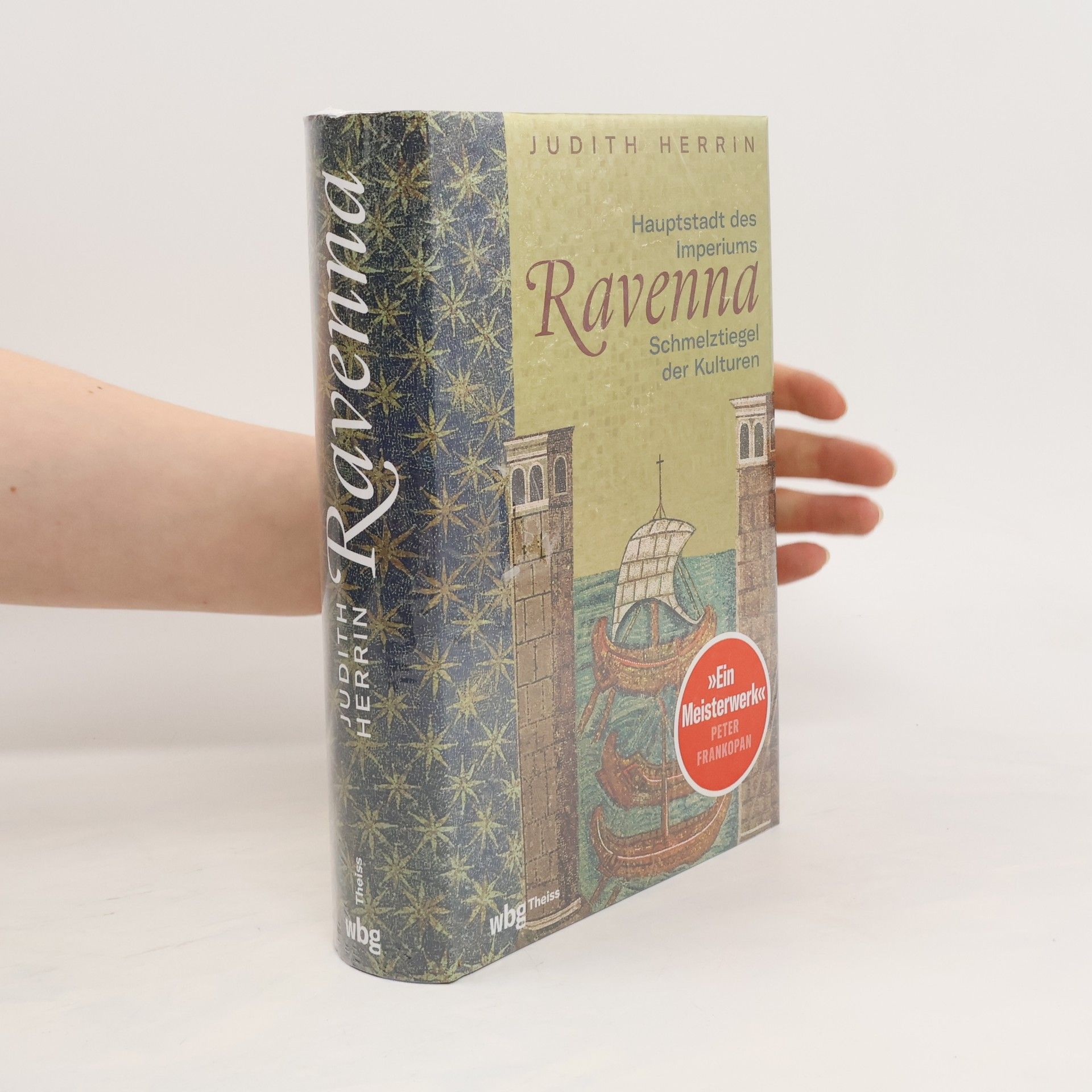Judith Herrin Libri
Judith Herrin è una storica di spicco dell'Antichità Tarda e di Bisanzio, il cui lavoro esplora principalmente la formazione della Cristianità e il ruolo delle donne nella società bizantina. La sua ricerca approfondisce le intricate connessioni tra Bisanzio e il mondo islamico, così come il suo rapporto con l'Occidente. Herrin sintetizza magistralmente le prove archeologiche con fonti testuali, dando vita all'impero medievale. La sua erudizione offre ai lettori una comprensione avvincente e sfumata della storia e della cultura bizantina.







The Formation of Christendom
- 568pagine
- 20 ore di lettura
"A groundbreaking history of how the Christian "West" emerged from the ancient Mediterranean world"--
"This sumptuous book is the ideal Christmas gift for anyone interested in the medieval era. Beautifully produced, with cloth binding, ribbon bookmark, and quality paper, it is lavishly illustrated throughout with images from illuminated manuscripts and selections from a range of medieval texts. A superb entry into medieval life as it was lived day-to-day."
Unrivalled Influence
- 352pagine
- 13 ore di lettura
Explores the exceptional roles that women played in the vibrant cultural and political life of medieval Byzantium. Drawing on a diverse range of sources, this title focuses on the importance of marriage in imperial statecraft, the tense coexistence of empresses in the imperial court, and the critical relationships of mothers and daughters.
Focusing on the lives of three lesser-known Byzantine empresses, Judith Herrin's work sheds light on their significance and the broader historical context of the medieval Byzantine era. By exploring the experiences of these extraordinary women, the book aims to engage a wider audience with this often-overlooked period in history. Herrin advocates for a renewed appreciation of Byzantium, positioning her exploration as a crucial step toward revitalizing interest in its rich legacy.
A glorious history of the jewel-like city on the Adriatic which was a melting-pot of Greek, Latin, Christian and barbarian culture. Winner of the 2020 Duff Cooper Prize In 402 AD, after invading tribes broke through the Alpine frontiers of Italy and threatened the imperial government in Milan, the young Emperor Honorius made the momentous decision to move his capital to a small, easy defendable city in the Po estuary - Ravenna. From then until 751 AD, Ravenna was first the capital of the Western Roman Empire, then that of the immense kingdom of Theoderic the Goth and finally the centre of Byzantine power in Italy. In this engrossing account Judith Herrin explains how scholars, lawyers, doctors, craftsmen, cosmologists and religious luminaries were drawn to Ravenna where they created a cultural and political capital that dominated northern Italy and the Adriatic. As she traces the lives of Ravenna's rulers, chroniclers and inhabitants, Herrin shows how the city became the pivot between East and West; and the meeting place of Greek, Latin, Christian and barbarian cultures. While Ravenna's palaces have crumbled, its churches have survived. In them, Catholic Romans and Arian Goths competed to produce an unrivalled concentration of spectacular mosaics, many of which still astonish visitors today. Ravenna- Capital of Empire, Crucible of Europe brings the early Middle Ages to life through the history of this dazzling city
Byzantium: the surprising life of a medieval empire
- 416pagine
- 15 ore di lettura
Explores the rise and fall of the Byzantine Empire, including important figures who shaped its history and the role it played in protecting Christianity from Islam's expansion across western Europe.
The book delves into the intricate connections between Byzantium and its provinces, particularly Hellas and Peloponnesos in Greece. Judith Herrin highlights how Constantinople's influence shaped the governance through military and ecclesiastical officials. It examines the imperial court's culture, including diplomacy, ceremonies, and intellectual pursuits, while addressing specific issues such as the transmission of mathematical texts, censorship, and the church's philanthropic role. This analysis reveals the interplay of political, cultural, and religious dynamics within the Byzantine Empire.
Kniha o panovnicích středověké Byzance. V 8. a 9. století obnovily tři byzantské císařovny po období ikonoklasmu znovu uctívání ikon. V plastických portrétech Ireny, Eufrosyné a Theodory vyvstávají děje středověké Byzance. Současně je kniha studií o poměru žen k moci, a tedy i historickým příspěvkem k diskusi o současném feminismu.
Ravenna
Hauptstadt des Imperiums, Schmelztiegel der Kulturen
Das große Porträt der Hauptstadt des frühchristlichen Europa Ravenna war vom 5. bis 8. Jahrhundert Treffpunkt der griechischen, lateinischen, christlichen und barbarischen Kulturen und Dreh- und Angelpunkt zwischen Ost und West. Während Rom sich provinzialisierte, erlebte die neue Hauptstadt des Weströmischen Reiches eine Blütezeit. Ungewöhnlich detailreich erzählt Judith Herrin auch von den Menschen dieser Zeit: von Kaiserinnen und Königen, Bischöfen und Gelehrten, Ärzten und Handwerkern. Detailreich und lebendig: Porträt der Hauptstadt des frühchristlichen Europa Ravennas Aufstieg ist eng verknüpft mit dem Niedergang Roms und den Invasionen der Hunnen und Goten Auch eine Geschichte der Spaltungen und Glaubenskämpfe im frühen Christentum Meisterlich erzählt und ausgezeichnet mit dem Duff Cooper-Preis 2020 Steinerne Zeugen der Vergangenheit: die Kirchen und Mosaiken Ravennas in prächtigen Farbabbildungen Aufstieg und Niedergang der Stadt an der Adria zwischen 402 und 751 n. Chr. Als im Jahr 402 n. Chr. eindringende Stämme aus dem Norden Mailand belagerten, verlegte der weströmische Kaiser Honorius den Regierungssitz nach Ravenna. Bis ins Jahr 751 war die goldglänzende Stadt an der Adria zunächst die Hauptstadt des Weströmischen Reiches, dann die des riesigen Königreichs des Goten Theoderich und schließlich das Zentrum der byzantinischen Macht in Italien. Die überwältigend schönen Kirchen mit ihren Mosaiken, von der UNESCO zum Weltkulturerbe erklärt, zeugen von dieser Zeit des Umbruchs, aus der das christliche Europa hervorging. Meisterlich porträtiert die vielfach ausgezeichnete Althistorikerin und Byzantinistin Judith Herrin diese Stadt und ihre Bewohner in der Epoche des Übergangs zwischen Spätantike und Frühmittelalter.


